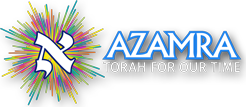
Foundations of Wisdom
10 Part Video Course on the Fundamental Concepts of the Kabbalah
By Rabbi Avraham Yehoshua Greenbaum
"The redemption will come about only through the study of the Torah. And the essential redemption depends upon the study of the Kabbalah"
-- Rabbi Eliyahu, the Vilna Gaon, Evven Shelemah 11:3
Presenting the classic latter-day exposition of the key concepts of the Kabbalah, Klaley Hatchalat HaChokhmah, with accompanying onscreen Hebrew text and running English translation and explanation
Klaley Hatchalat HaChokhmah explains the basic concepts of the Kabbalah for those embarking on the study of Chokhmat Ha-Emet, "The Wisdom of Truth". The work is founded on the Zohar and teachings of Rabbi Isaac Luria ("ARI", 1534-72) as elucidated in the writings of Rabbi Moshe Chaim Luzzatto ("RaMChaL", 1707-47 ), Rabbi Eliyahu, the Gaon of Vilna ("HaGRA", 1720-97) and other kabbalistic texts. The original manuscript, written anonymouly, was transcribed and edited by Rabbi Aharon Meir Altschuler, supervisor of slaughter and kashrut (shochet u-bodek) in the city of Mariupol and descendant of the saintly mekubal, Rabbi Klonymus Kalman of Tschavos, to whom this work is sometimes attributed. The work was printed in Warsaw in 1893 and a new edition was published in Jerusalem in 1989.
Online Hebrew text & English translation
• The course is be based on the Hebrew online edition of Klaley Hatchalat HaChokhmah with acknowledgement and grateful thanks to the Sefaria Libary of Torah Texts.
• The Sefaria Hebrew text is accompanied by the English translation by Rabbi Amiram Markel and Michoel Tzvi Wolkeneld 2004-2006.
Other Kabbalah resources on Azamra:
Secrets
of the Future Temple | 138
Openings of Wisdom | 48-part
audio course on The Kabbalah Code, Shaarey Orah
Foundations of Wisdom
Part 1: The Sefirot; Systems of Divine Government and their associated names
Section 1: The Ten Sefirot
Section 2: Interiority and Exteriority: Keter & Daat
Part 2: Man, his 613 limbs and organs and their spiritual counterparts and the concept of Partzuf ("face", "visage", "character")
Man, his 613 limbs and organs and their spiritual counterparts and the concept of Partzuf
Part 3: The Divine Names and associated principles
Section 1: The Divine Names & The Sefirot; Milu'm - "Expansions"
Section 2: The Divine Names: Ribu'a; Tzeiruf; Shiluv; Name of 72; the 22 letters of Alef Beit
Part 4: Parallels to the Sefirot in Creation
Phenomena in the Creation that are cognates, correspond or are parallel to the Sefirot
Part 5: Lights and Vessels, Causality (Hishtalshelut) & Enclothing (Hitlabshut), Inner, encompassing & rebounding light
Part 6: The World of Chaos (Tohu), The World of Repair (Tikkun); interconnection of the Three Upper and Seven Lower Sefirot, Israel Saba, Tevunah, the Seven Repairs and Thirteen Repairs of the Beard
Worlds of Tohu and Tikkun; Interconnection between Sefirot; Tikkuney Dikna
Part 7: Interaction & union of Mercy (Rachamim) with Judgment (Din), of the six sefirot of Zeir Anpin with Malchut, and of the Creator with the worlds; the female waters and male waters.)
Part 8: The different stages of the divine Government until eternity, Adam Kadmon and His Branches, the emanations of His ears, nose, and mouth, the world of Bundles (Akudim), the Contraction (Tzimtzum) and the Line (Kav)
Divine Government until Eternity: Adam Kadmon; Tzimtzum & the Kav
Part 9: The Worlds of Creation (Briyah), Formation (Yetzirah) and Action (Asiyah), the Palaces (Heichalot) and Souls (Neshamot)
Part 10: The side of evil, (Sitra Achra) and the complete repair in time to come

Title page of the 1893 Warsaw edition of Klaley Hatchalat HaChokhmah
